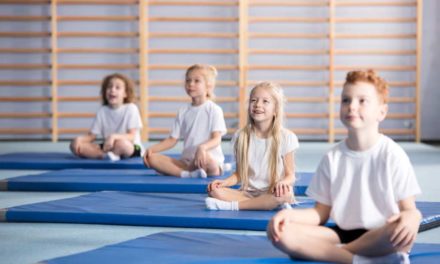The New National Curriculum
As a physical education teacher, it is paramount that the physical literacy quest has been at least introduced, if not ‘drummed into’ a child’s education from the start, as it is not a scheme of work or highlighted part of the curriculum.
The New National Curriculum states that the aim of physical education is for all pupils to:
- Develop competence to excel in a broad range of physical activities
- Become physically active for sustained periods of time
- Engage in competitive sports and activities
- Lead healthy, active lives
The most effective way of achieving these goals is by actively emphasising the importance of physical literacy, rather than remaining an unseen objective.
In November 2013, the Youth Sports Trust produced a Primary Physical Literacy Framework. This provides schools with simple guidance on how best to structure PE and sport provision to ensure every opportunity is provided to develop the physical literacy of pupils.
The framework helps schools consider what appropriate PE and school sport opportunities they should offer at each stage of a child’s development, in order to maximise the potential to develop their pupils’ physical literacy.
Developing Physical Literacy
Within primary and secondary schools alike, it is essential that strong, common, high profile physical education and school sport programmes are delivered. This allows each child to attain the foundations of being physically literate; enjoying taking part in physical activity not just in school but throughout their life course.
As Whitehead states, physically literate individuals:
- Develop their physical potential and experience the satisfaction of progress and success in physical activity
- Grow in self-awareness and self-assurance and strengthen their global self-belief and self esteem
- Come to realise that being active can be rewarding and pleasurable and develop a commitment to an active lifestyle
- Have the confidence to explore participation in a wide range of activities
- Acquire a sense of empowerment to make choices and thus widen their life choices
- Enhance their all-round health and well-being and are less likely to become over-weight and more likely to remain fit and healthy into old age
- Come to appreciate the value of physical activity in respect of promoting wellbeing and realise the importance of taking responsibility for their own participation
- Learn to make informed decisions about the kind of purposeful physical activities they want to engage in, on a regular basis and actively evaluate their life habits and patterns, with respect to participation in purposeful physical activities, from an informed position
The importance of developing this physical literacy is to empower children’s personal growth and enjoyment, so that they may lead healthy lives, throughout their education and into adulthood. Participation is currently a major issue, particularly in secondary schools.
Physical literacy needs to be addressed in primary school, and communication between primary and secondary schools needs to occur so that this development can be consistent in the transition between the two.
“The motivation, confidence, physical competence, knowledge and understanding to value and take responsibility for maintaining purposeful physical pursuits/activities throughout the life course” (Whitehead 2010).
Parental Involvement
One vital factor for this development is educating parents that are not currently physically literate. Encourage parents to have an active role in their child’s physical literacy development.
By doing this, the attitudes introduced in school can be reinforced by parents and carers at home; ensuring this attitude towards physical activity becomes a way of life.
Positive experiences
Physical literacy is an attitude towards physical education which is created by reinforcing positive past experiences. This attitude is best developed by engaging in physical education and activity, both inside and outside of school.
Think about your own physical literacy quest: have you always enjoyed participating in physical education and sports? Were there times you felt like you wanted to give up or times you’ve been more motivated than ever? Would you be teaching physical education now if it wasn’t for your own positively reinforced experiences and the affirmative effects of your former teachers and coaches that are now reflected in your attitudes?
We need ensure our pupils have the same opportunities to experience the same positive experiences of physical activity that motivated us, passing on an understanding of the value of physical activity.
Developing skills
Developing physical literacy as early as possible in a child’s life is of key importance, as this not only ensures the intrinsic value that comes with being physically literate, but offers children the opportunity to improve their fundamental motor skills, such as coordination and object control.
Developing these skills encourages a broader perspective and improved confidence, encouraging increased growth in participation levels and involvement in competitive sport. These can all be actively developed through a range of appropriate opportunities within Curricular PE, extra-curricular activities, play, active travel, community sport clubs and at home.
These opportunities should be child-centred, positive and inclusive, taking place in a supportive, interactive and encouraging environment.
Physical literacy is a lifelong quest: a maintained attitude that may have stumbling blocks along the way and may flourish differently according to each individual.










